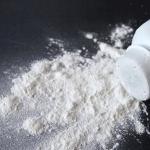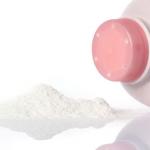(Updated May 24, 2018)
Talc is the softest mineral known to man, a clay derivative that has been the main component of baby powder and other cosmetic products for decades. Talcum powder reduces friction and absorbs moisture; combined with its natural softness, these traits make it an ideal component in facial and body powders.
Women who contracted ovarian cancer after using talcum powder have been awarded tens of millions of dollars after filing lawsuits.
But the more we learn about talc, the more dangerous it appears. For 50 years, concerning studies have been published on its links to lung and ovarian cancer.
Recently, several women have been awarded tens of millions of dollars—each—after filing lawsuits because they contracted ovarian cancer after many years of using talcum powders. Others have received million-dollar verdicts after contracting mesothelioma.
Thousands have filed talc lawsuits against Johnson & Johnson.
A Brief History of Talc
Talc has been used in myriad forms and fashions for thousands of years. In ancient times, people crafted utensils, ornaments, and carvings out of soapstone. Talc is also a key component in various kinds of chalks and marking powders.
But it wasn’t until the tail end of the 19th Century that talc achieved its greatest fame. In 1893, the Johnson & Johnson company, which manufactured medical plasters at the time, received complaints that its plasters irritated the skin. So the company’s Scientific Director, Fred Kilmer, sent customers small tins of talc to soothe their irritation. Customers raved about the powder, which also helped with diaper rash.
After World War I, the advertising industry boomed, and Johnson & Johnson capitalized. The company launched its largest campaign in history—for Johnson’s Baby Powder. In this way, the powder became a staple of American hygiene and childcare.
Today, despite questions about its safety (see below), talc is widely used not just in baby powder but across a broad swath of industries, including cosmetics, ceramics, pharmaceuticals, and sports.
Questions About Talc Safety
In June 1969, the American Academy of Pediatrics (AAP) published an article entitled “Dangers from Talcum Powder,” which states:
Most pediatricians are aware of the adverse effects of talcum powder aspiration, which may result in acute or chronic lung disease. At least three fatalities have been reported following the aspiration of talcum powder by infants. Verbal communication with the New York Poison Control Center reveals that approximately 50 cases of talcum powder aspiration are reported to that center annually.
Today, the AAP still advises parents against using baby powder due to the risk of inhalation and subsequent lung damage or even death.
Until the 1970s, baby powder contained asbestos, which has infamously been linked to lung cancer and mesothelioma. Johnson & Johnson has removed the asbestos, but they haven’t been able to eliminate talc’s other risks.
Since 1971, more than 20 studies have linked talcum powder to ovarian cancer.
Since 1971, more than 20 studies have linked talc powder to ovarian cancer. In 2003, an analysis of 16 of these studies found that women using talcum powder were 33 percent more likely to develop ovarian cancer. It has been alleged that Johnson & Johnson knew about the ovarian cancer risk since at least 1982, but failed to warn women using these products.
A 1995 study by the National Institute for Occupational Safety and Health (NIOSH) found that men who mined or milled talc were more likely to develop lung disease, including lung cancer. The mortality rate among talc workers was also higher than expected, reinforcing the notion that regular talc intake is inadvisable.
Indeed, studies have also shown an increased risk of ovarian cancer for women who use talc for feminine hygiene. A 1999 study in the Journal of the National Cancer Institute noted, “Perineal talc use has been associated with an increased risk of ovarian cancer in a number of case-control studies,” and concluded that “perineal talc use may modestly increase the risk of invasive serious ovarian cancer.”
In 2013, the American Association for Cancer Research published findings that talc powder “is associated with a modest 20-30 percent increase in risk of developing epithelial ovarian cancer.”
During the Jacqueline Fox trial, internal memos suggested Johnson & Johnson executives knew of the risks: one of their medical consultants even compared talc use to smoking.
And according to the Campaign for Safe Cosmetics (among other sources), talc-based cosmetics are restricted in the European Union due to its potentially carcinogenic effects.
The Campaign for Safe Cosmetics also cites a 2015 study that determined that talcum powder can be considered “toxic to ovarian tissue.” The campaign advises against using talc in the pelvic areas regardless of whether or not it contains asbestos.
At present, both the National Cancer Institute and the American Cancer Society consider talc use near the genitals as a “risk factor” for ovarian cancer. Despite this possible link, Johnson & Johnson and other talc powder manufacturers have not placed warnings about this risk on their products.
Notable Talcum Powder Lawsuits
In 2013, a physician’s assistant named Deane Berg sued Johnson & Johnson after contracting ovarian cancer she says developed from her regular baby powder use. Ms. Berg turned down a $1.3 million settlement and took the case to court, where Johnson & Johnson was found guilty of negligence, fraud, and conspiracy for not warning women of its products’ health risks.
In April 2014, a California woman named Mona Estrada filed suit against Johnson & Johnson for failing to warn women of the increased risks of ovarian cancer. The next month, Barbara Mihalich of Illinois filed a class action suit alleging that Johnson & Johnson utilized deceptive business practices and profited unjustly from its talc products. (Neither Ms. Estrada nor Ms. Mihalich suffers from ovarian cancer or any other talc-related side effects.)
J&J was found guilty of negligence, fraud, and failing to warn women of its products' health risks.
In May 2016, a Missouri jury found in favor of Gloria Ristesund, who contracted ovarian cancer after using Johnson’s Baby Powder and Shower to Shower Powder on her pelvic area for decades. (As a result, Ms. Ristesund had to have a hysterectomy and other surgeries.) The jury awarded Ms. Ristesund $55 million: $50 million for punitive damages, and $5 million for compensatory damages.
In May 2017, a St. Louis jury awarded $110 million to Lois Slemp (62) of Wise, Virginia. Ms. Slemp alleged that her regular use of Johnson’s Baby Powder and Shower-to-Shower products over a 40-year span caused her to develop ovarian cancer, which then spread to her liver. Ms. Slemp also alleged that Johnson’s Baby Powder contained asbestos, which the company denied.
The jury emphatically sided with Ms. Slemp. Of the $110 million award, $105 million were for punitive damages.
Compensation for Talc-Related Injuries
If you or a loved one has been diagnosed with ovarian cancer after using talcum or baby powder, a class action lawsuit will not provide you with compensation for medical bills and other damages related to the cancer diagnosis.
Pending class action lawsuits against Johnson & Johnson only seek to recover compensation for the cost of the powders on behalf of consumers who purchased the products, regardless of whether they developed cancer.
However, you may be able to file a lawsuit separate from the class action, through which you can seek compensation for any damages stemming from a cancer diagnosis. This may include past and future medical bills, lost wages, pain and suffering and (in the event of a loved one's death) funeral expenses.
We only collect a fee if we are able to resolve the case favorably, with a jury award or out-of-court settlement. Contact us today to learn if you might be owed money.





